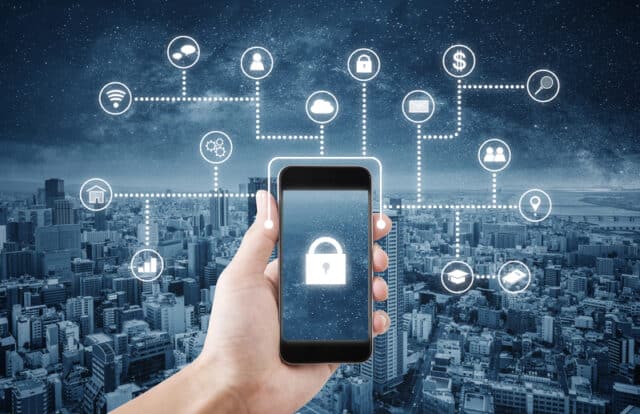How the use of mobile devices is changing the cybersecurity landscape [Q&A]

As consumers and businesses undergo a sea change shift towards mobile interfaces, embracing everything from retail to human resources management, the landscape of mobile security is experiencing a parallel transformation.
With this surge in reliance on mobile devices, threats have become more sophisticated, spanning network vulnerabilities, the proliferation of malware, and the craftiness of phishing schemes.
We spoke to Roland Lipošinović, corporate security specialist at Infobip, to find out more about why this is happening and what it means for the future of the data protection and cybersecurity industries.
BN: Why has the increased use of mobile devices become such an issue for security teams?
RL: Navigating these challenges is akin to steering a ship through uncharted waters, complicated by the diverse operating systems in play and the glaring gaps in user awareness. The rise in mobile fraud, fueled by the escalating popularity of online transactions, necessitates a proactive defense strategy. This involves fortifying digital walls with stronger passwords, relying only on trusted app sources, and maintaining a vigilant stance through consistent software updates. As the digital realm becomes increasingly mobile-centric, the call for robust security measures echoes louder, emphasizing the need for a comprehensive shield to safeguard both brands and consumers in this dynamic digital landscape.
BN: What are the current threats to mobile security?
RL: When it comes to mobile security, there are a few big challenges we're facing. First off, there are network-basedtThreats. Stealthy cybercriminals are taking advantage of unencrypted mobile data, basically making it an open book for interception and theft during transmission. It's like sending a postcard with your personal info for anyone to grab.
There's also the malware onslaught. It's on the rise, creating a whole new web of challenges. These apps can do all sorts of damage -- stealing your personal info, keeping tabs on users, or even taking control of your device. It's like having an uninvited guest in your digital space.
Even more worrying are phishing and smishing (SMS Phishing) Attacks. Cybercriminals are getting creative, sending out tricky SMS messages or emails to entice you to reveal sensitive data like passwords or credit card details. AI is enabling them to become far more sophisticated at cracking the code into your personal vault.
BN: What are some of the challenges to navigating mobile security?
RL: Navigating the mobile security terrain can be complicated, particularly as we contend with the diverse ecosystem, with mobile devices running on different operating systems. Keeping things secure across all these platforms is a constant challenge.
There's the user awareness hurdle as well. Many consumers and enterprises aren't quite aware of the risks lurking in the digital shadows. It leads to some lackluster security practices, like using passwords that are basically open invitations.
BN: Why are we seeing a rise in mobile fraud and security breaches?
RL: The surge in mobile fraud is like a digital mystery unfolding, revealing the darker side of our interconnected world. One significant factor contributing to this surge is the exponential increase in online transactions through mobile devices.
Cybercriminals are drawn to the lucrative potential of scams and identity theft. Mobile users, with their often more lenient security measures compared to desktops, become these prime targets navigating treacherous waters, making it imperative for both individuals and businesses to batten down the hatches and reinforce their digital defenses against these cunning adversaries.
BN: How can brands and consumers protect themselves against mobile fraud?
RL: Protecting yourself in this digital jungle is crucial. First off, lock down all passwords. Make them complex, like solving a puzzle. Add two-factor authentication for extra security -- it's no longer an option to have just one layer of protection.
Next, be highly selective about choosing which apps to install. Stick to reputable app stores – it can also be helpful to read through reviews. And don't forget to keep your digital house in order by updating your operating system and apps regularly.
BN: What are the advantages of investing in mobile security infrastructures?
RL: As an enterprise, investing in mobile security is like building a fortress to guard your digital kingdom. First off, there is data protection, which keeps sensitive data safe from any would-be thieves.
Second, but equally essential is brand reputation. Having a secure mobile space tells your users you're serious about their safety. Plus, it often lines up with regulatory requirements -- that's compliance, which protects businesses from legal risks.
And last but certainly not least, there's customer trust. Users appreciate a brand that prioritizes their security and privacy. It's like having a loyal army of supporters who know you've got their back on the digital battlefield. This trust isn't just a shield; it's a beacon guiding the brand through the competitive landscape. It strengthens the connection, transforming users from mere customers into devoted allies, fostering a relationship that withstands the challenges of the digital age, and solidifying the brand's position as a trusted guardian in the ever-evolving realm of customer expectations and digital risks.
Image credit: Sasinparaksa/Dreamstime.com
